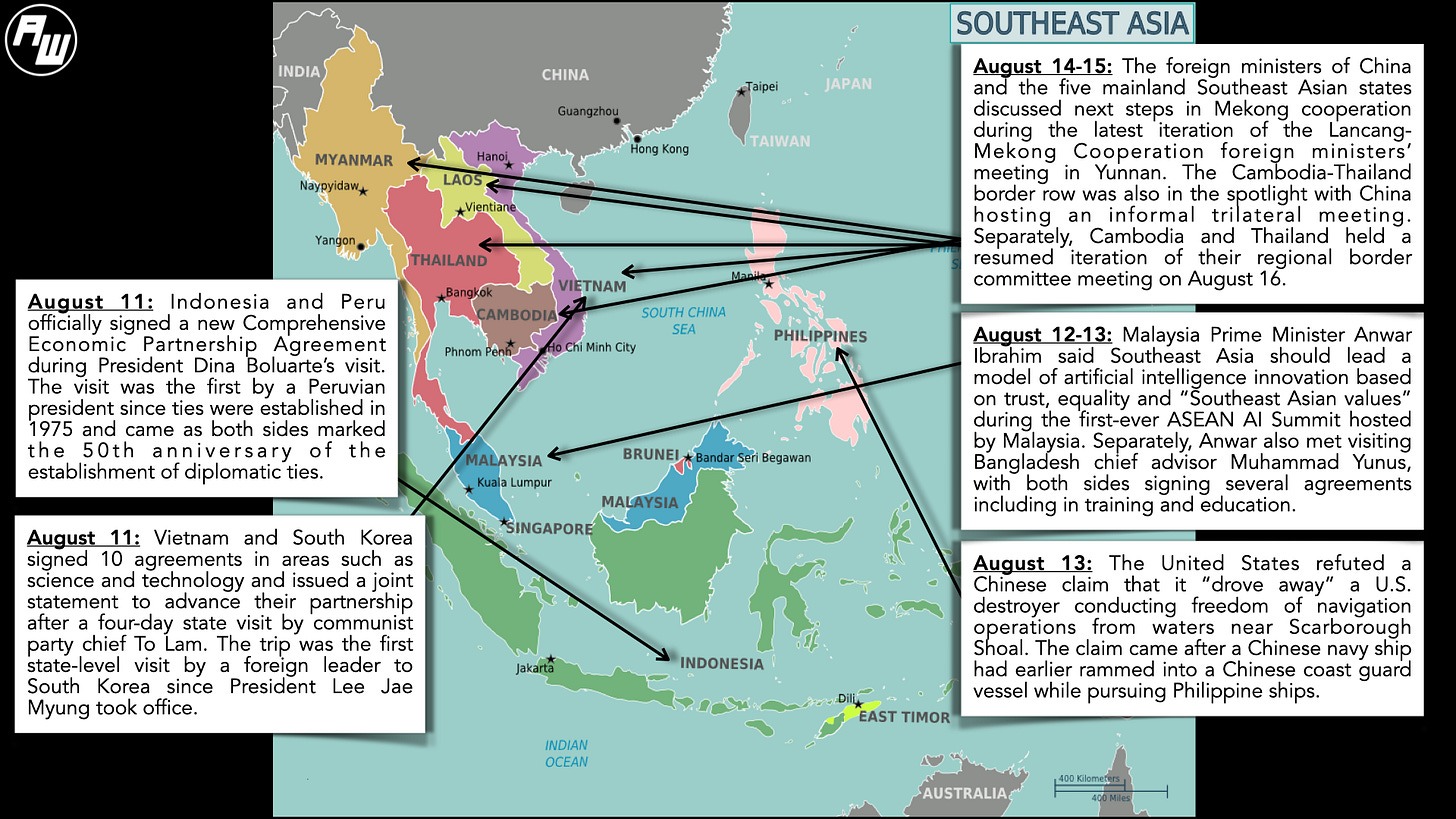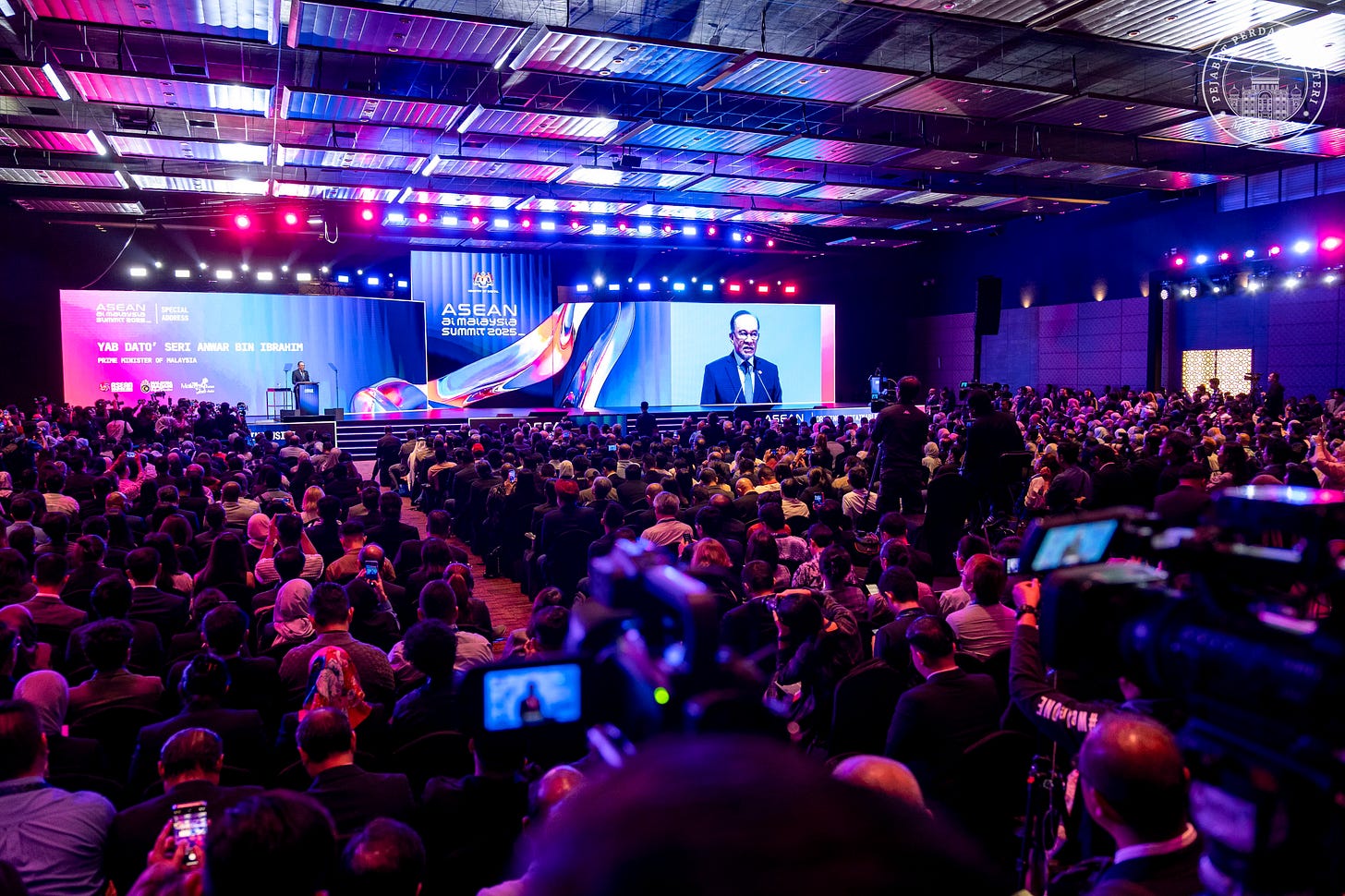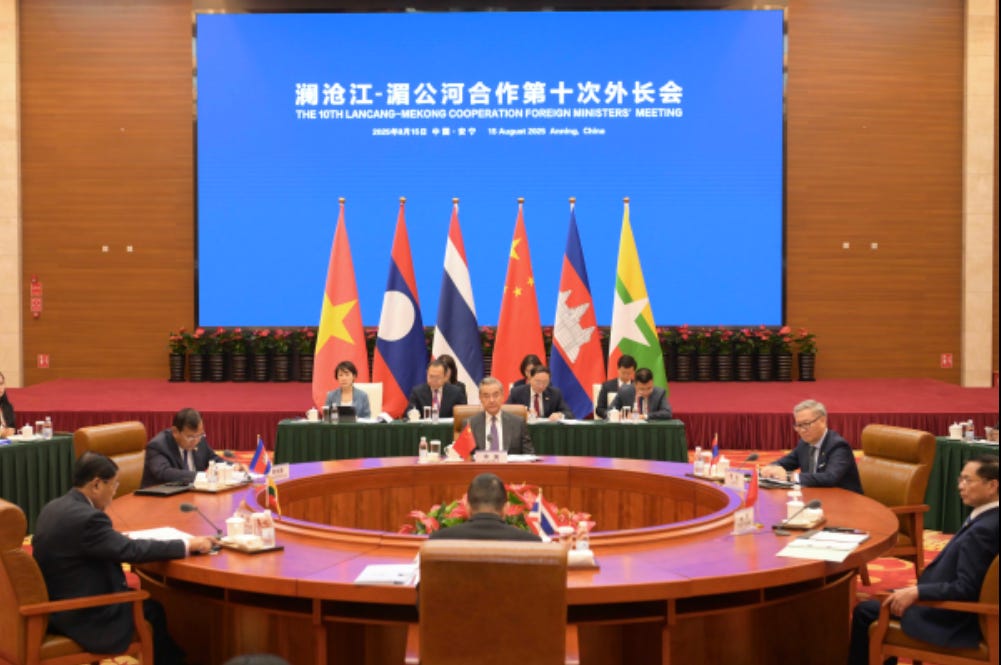China Hails Quad Meet and New Strategy at Mekong Ministerial
Plus warring destroyer claims; artificial intelligence roadmap inroads; defense cancellation; nuclear framework development; crypto rollout and much, much more.
Greetings to new readers and welcome all to the latest edition of the weekly ASEAN Wonk BulletBrief! If you haven’t already, you can upgrade to a paid subscription for $5 a month/$50 a year below to receive full posts by inserting your email address and then selecting an annual or monthly option. You can visit this page for more on pricing for institutions, groups as well as discounts. For current paid subscribers, please make sure you’re hitting the “view entire message” prompt if it comes up at the end of a post to see the full version.
For this iteration of ASEAN Wonk BulletBrief, we are looking at:
Assessing the geopolitical and geoeconomic significance of a new China strategy preview and minilateral meets at a recent regional engagement;
Mapping of regional developments, including warring destroyer claims and new geoeconomic pact signing;
Charting evolving geopolitical, geoeconomic and security trends such as nuclear development; artificial intelligence roadmap check & crypto rollout;
Tracking and analysis of industry developments and quantitative indicators including defense cancellation; digital launch; visa competition race and more!
This Week’s WonkCount: 2,237 words (~10 minutes)
Warring Destroyer Claims; New Geoeconomic Pact & More

Deterrence-Diplomacy Tightrope; Post-2025 Outlook & Digital Spotlight at First-Ever ASEAN AI Summit
"As it works to protect its interests – including in peace and security –
Manila will need to walk a careful line between diplomacy and
deterrence,“ notes a new report on Philippine military modernization by the International Crisis Group. The report notes that deterrence requires a range of measures including “reforming glacial procurement procedures” and “improving joint planning and operations among the armed services.” (link)
Map Illustrating Philippine Claims in the South China Sea vs. China’s Nine-Dash Line
“In their discussions, three themes – digitalisation, sustainability, and inclusiveness – are considered salient areas for the upcoming master plan,” argues a new report by the Economic Research Institute for ASEAN and East Asia (ERIA) on priorities for the ASEAN Economic Community post-2025. The report outlines several priority areas in 21 chapters across four parts — taking stock of the AEC; moving towards a inclusive, sustainable and digitally integrated AEC; deepening economic integration; and enabling the AEC on several fronts including monitoring and governance (link).
Graphic on Past Distribution of Cumulative Foreign Direct Investment into ASEAN
“Those of us who have been fortunate to be exposed to these new disciplines and technology, and those of us and our family members in the rural heartland who are completely cut off, would of course read into what we term as the digital divide,” Malaysia Prime Minister Anwar Ibrahim noted in his keynote address to the first-ever ASEAN Artificial Intelligence Summit organized by Malaysia as part of its ASEAN chairmanship. The summit was attended by a range of stakeholders including officials and companies (link).
China Hails Quad Meet and New Strategy at Mekong Ministerial
What’s Behind It
China played up a newly developing strategy and sideline engagements at a meeting hosted with the five mainland Southeast Asian states as part of the subregional minilateral Lancang-Mekong Cooperation (LMC) mechanism which it has helped lead1. While some China state media outlets continued to play up some of these interactions — including labeling China-Laos-Myanmar-Thailand consultations initially prompted by proliferating scam centers as separate, designated “quadrilateral” meetings — Southeast Asian officials have continued to emphasize these as more informal and issue-based consultations in a crowded regional agenda2. This occurred amid wider interactions during the week, including Vietnam communist party chief To Lam’s visit to South Korea, resumed meetings between Cambodia and Thailand amid their border row as well as continuing concern in parts of the international community on upcoming Myanmar polls (see ASEAN Wonk timeline graphic below).
Select Key Recent Developments Related to Mainland Southeast Asia Amid LMC Ministerial Meeting
The engagements also put the focus on a key aspect of China’s wider influence in Southeast Asia. China’s complex role on some of these agenda items was visible during the engagements in Yunnan. This included the noticeably differing reactions by Cambodia and Thailand to the so-called trilateral “informal tea chat” China hosted on the border row as well as the hyping up by Myanmar’s junta government in its strategic communications with respect to Beijing’s “full support” for holding elections later this year amid other ongoing Chinese efforts to secure its own economic interests ahead of expected polls3. Officials also note that uncertainties also remain about how the LMC will evolve beyond public portrayals of the mechanism’s first ten years thus far as a “golden decade” and fears of its dominance within the subregional architecture in the Mekong region4.
Why It Matters
The state of play also pointed to future datapoints to watch across key areas as well as regional and global implications (see originally generated ASEAN Wonk table below on notable areas to monitor and additional specifics. Paying subscribers can read on for more on what to expect and future implications in the rest of the “Why It Matters” and “Where It’s Headed” sections, along with paid-only sections of the newsletter as usual).











